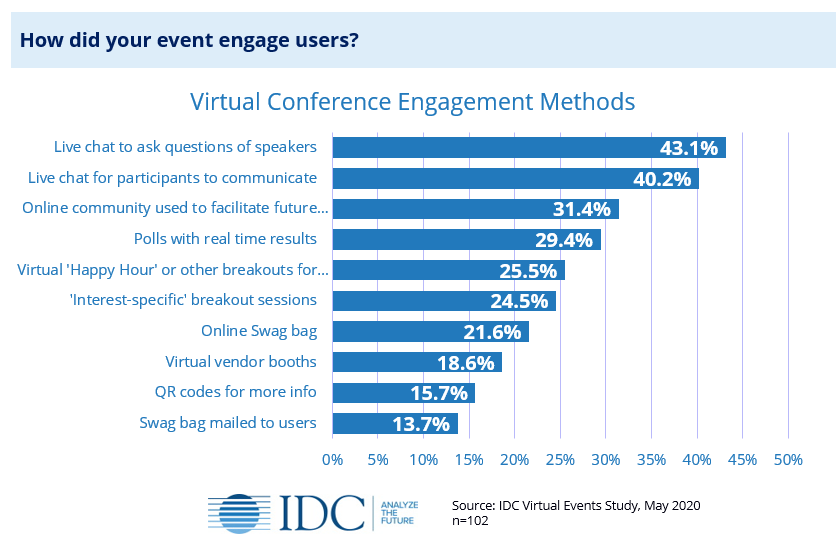Many of us miss people we meet at in-person conferences. The interactions are a big reason why we go to these events. COVID-19 has forced these events to go virtual, but making them successful is an exercise in customer experience.
To learn what worked well and what did not, IDC studied conferences of between 250 and thousands of attendees that became virtual events. In our IDC Study: Virtual Meetings and Conferences, we looked at experiences and expectations from both organizers and attendees of these virtual events. The results underscore that any event today should not be a one-way broadcast platform – it needs to be about inclusion and engagements – the experience.
Conferencing applications are now the norm at home and work. Over 99% of respondents including both organizers and attendees report using conferencing applications for home use. They use an average of 4.8 different applications “often”. The expectation is already set: Videoconferencing is for engagement, not broadcast. Even when looking at keeping people engaged, talking “at” people does not have the same effect as engaging them. That sounds obvious, but apparently, it’s not.

When people attend in person events, 86% of people engage in conversations with others. They socialize, network and develop professional relationships. This research confirms that people are still looking to engage with other in virtual conferences, yet 57% of organizers did not seek to engage the attendees nor enable them to engage as a group.
How to Make Videoconferencing More Engaging
While there have been a few notable exceptions where this is done exceptionally well, not providing an engagement channel drives a sharp increase in Twitter conversations. Some users tend to break away from the event’s hashtag, making it “invisible” to the organizers, and the results are not always positive. Organizations that make it easy to engage with other users on the platform drive better attention and engagement. Using moderated branded communities drives 13% more success in session attendance, and fosters greater social media hashtag usage. The attendees, where the communities are well-staffed and moderated, also foster more long-term relationships with the brand and user community. This builds a sense of loyalty, community and trust.
Since people are often working from home, new “virtual swag bags” are finding favor and are used by 22% of those organizers surveyed. In place of a meal, it may include a voucher to a food delivery service, mindfulness app, or a voucher for the company swag store.
Conferences are not and have never been about broadcasting information. Like social events and social media, they are conversations between people and sometimes companies. If used well, they help build trust and loyalty to the brand and to the brand’s communities.
People will be talking with you or without you. It is up to each company to digitally transform and facilitate and participate in the conversations.
Explore more of IDC’s findings from our Virtual Meetings and Conferences survey; listen to the on-demand presentation here:




